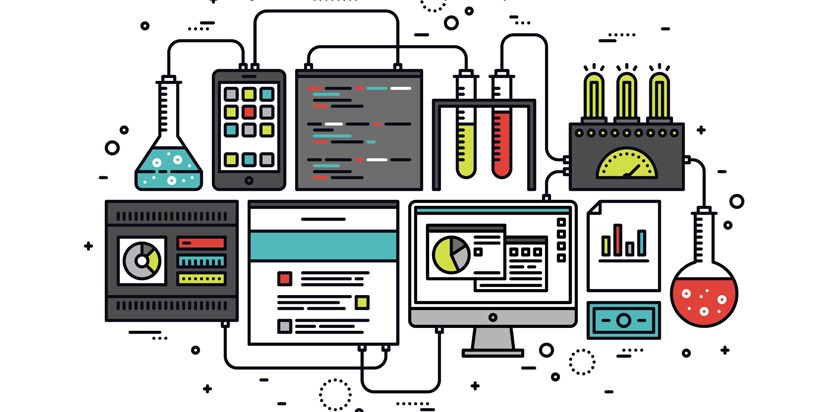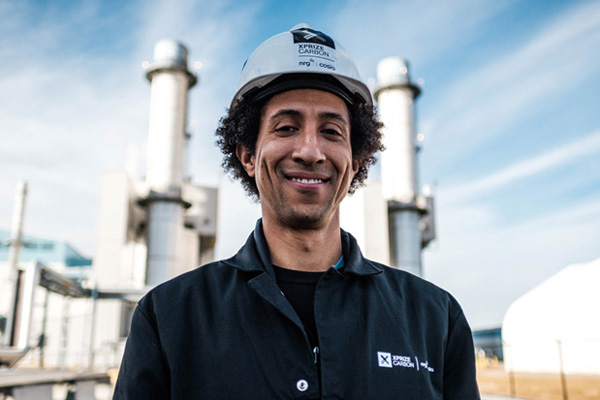
Downloads: Download Article (PDF)
How many times this week have you lounged on the couch while texting friends or checking out new Tik Tok videos? Have you gone out for a burger and fries, or jumped online to order a new pair of shoes? Now ask yourself this question: How many times have you thought about what it takes to make and deliver those products to you?
It wouldn’t be surprising if this question is not on your radar—most people don’t think about the life cycle of the stuff they use. But awareness about the processes and materials that enable our modern-day habits is growing. Tens of thousands of substances are used to give us the material goods we want and the intangible things we enjoy. (Vast quantities of computer servers and equipment keep us digitally entertained.)
We trust that our purchases are safe to make and use—or we don’t think about their safety at all. But is that the best approach?
The problem with convenience
Take PFAS as an example. PFAS stands for per- and polyfluoroalkyl substances. Some 5,000 to 7,000 chemicals are categorized as PFAS, which are used to make products from firefighting foams to nonstick cookware. Many are immensely useful.
A growing body of evidence shows that certain PFAS may cause health problems. The industrial release of PFAS waste by companies into local waterways has led to thousands of lawsuits claiming that the pollution caused illnesses in residents. Companies that make PFAS have paid millions to the plaintiffs, and have pledged to stop using some PFAS altogether.
So, what’s being done to minimize the potential risks of substances in consumer products? The primary law that protects us from chemical hazards is the Toxic Substances Control Act (TSCA), which Congress passed in 1976. TSCA gives the U.S. Environmental Protection Agency (EPA) the authority to require testing of chemicals and to limit their use.
Under TSCA, several substances have been regulated, including dioxins (often associated with Agent Orange). But the law allowed the 62,000 substances in use prior to 1976 to remain in use, unless they were found to pose an “unreasonable risk to health or to the environment.” The TSCA inventory of chemicals grew to 86,000, then was pared back in 2019 to about 40,000 chemicals actively in use—that’s a lot of chemicals to study.
Under a TSCA overhaul in 2016, the EPA was tasked with prioritizing which ones (including previously unreviewed chemicals) should be assessed for risk based on the following criteria: a chemical’s persistence in the environment and accumulation in the body, its ability to cause cancer in humans, and its toxicity. Now EPA maintains a list of high-priority substances to evaluate and possibly regulate.
Chemicals in Commerce
In 2016, the U.S. updated its chemical regulations law to better track and assess the safety of chemicals being made and used in the country. Here’s a snapshot of the chemical numbers, according to the U.S. Environmental Protection Agency.
| 86,000 | 40,000 | 550 | 30 | 350,00 |
| Chemical substances listed in 2018 in the EPA inventory | 2019 estimate of chemicals in active production and use in the U.S. | Number of new chemical substances EPA has approved for commerce (2016-2019) | Total number of high-priority chemicals to undergo EPA risk evaluation by the end of 2022 | Worldwide number of chemicals and mixtures of chemicals registered for commerce* |
No simple solution
Many of the thousands of chemicals being used in our products are perfectly safe or can be safely disposed of. Determining if a substance is safe or harmful when it’s used in products requires scientific studies that are complex and expensive, and they often don’t provide a clear path forward. With chemicals, dose makes the poison, which makes a simple “safe/not safe” answer for the general public hard to come by. Complicating things further, many substances we now know to be toxic at a high level of exposure have become essential in certain applications. Some hexavalent chromium compounds, for example, are used to prevent catastrophic corrosion in aircraft and are difficult to replace, but they pose serious health risks to unprotected workers.
The complex interplay between chemicals, the environment, and human health is not easily distilled into pro and con arguments. And even with TSCA in place, we will need to continually ask questions about whether we are achieving the right balance to protect society and enjoy the benefits of modern innovations.
No simple solution
Many of the thousands of chemicals being used in our products are perfectly safe or can be safely disposed of. Determining if a substance is safe or harmful when it’s used in products requires scientific studies that are complex and expensive, and they often don’t provide a clear path forward. With chemicals, dose makes the poison, which makes a simple “safe/not safe” answer for the general public hard to come by. Complicating things further, many substances we now know to be toxic at a high level of exposure have become essential in certain applications. Some hexavalent chromium compounds, for example, are used to prevent catastrophic corrosion in aircraft and are difficult to replace, but they pose serious health risks to unprotected workers.
The complex interplay between chemicals, the environment, and human health is not easily distilled into pro and con arguments. And even with TSCA in place, we will need to continually ask questions about whether we are achieving the right balance to protect society and enjoy the benefits of modern innovations.









